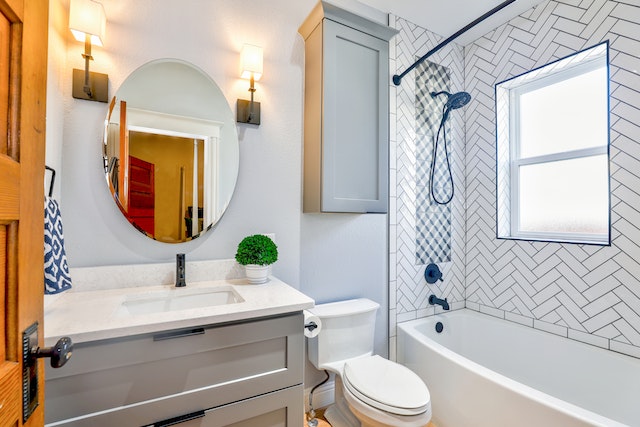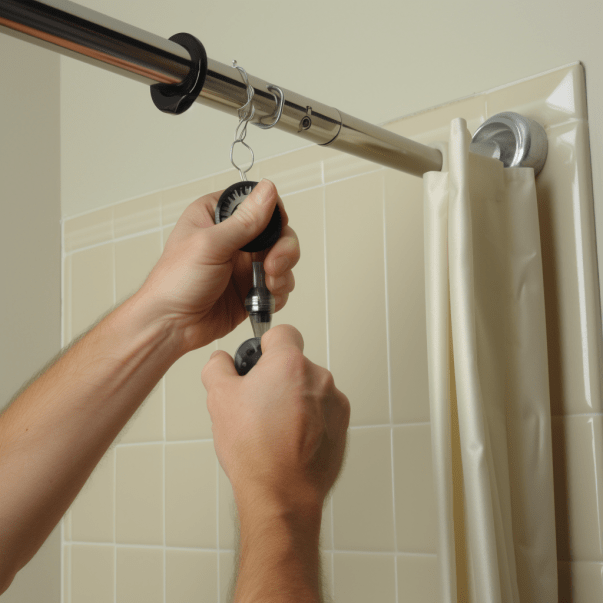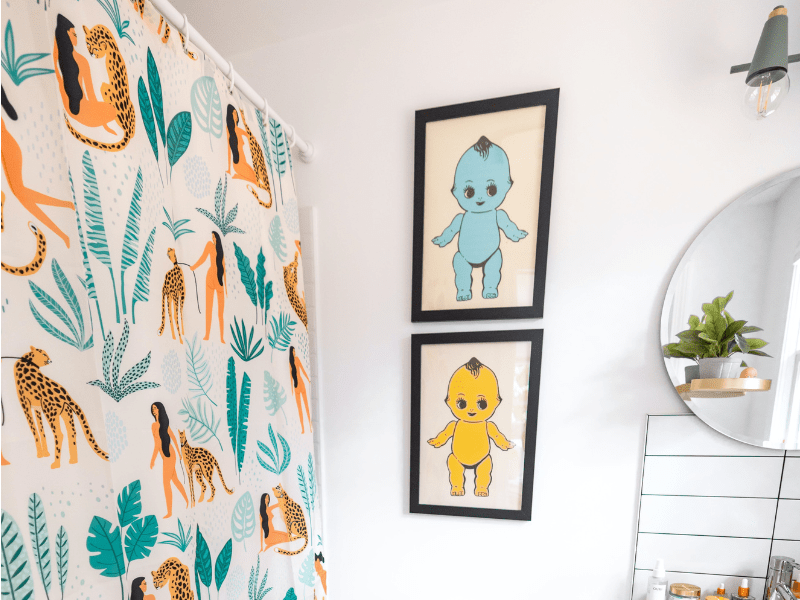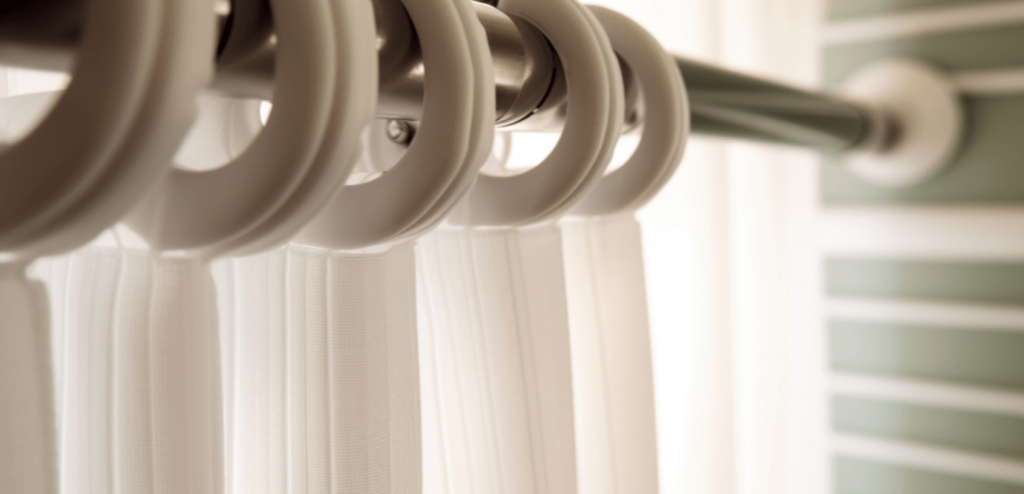Choosing the right shower curtain rod might seem like a small detail, but it can have a significant impact on both the functionality and aesthetic appeal of your bathroom. Shower curtain rods come in various styles and types, each suited to different needs and spaces. In this comprehensive guide, we’ll explore the distinct types of shower curtain rods, their installation processes, and the scenarios they are best suited for, helping you make an informed choice for your bathroom.
Tension Rods
The first type of shower curtain rod we’ll explore is the tension rod. Tension rods are popular for their ease of installation and removal. They work by using a spring mechanism that allows them to fit securely between two walls without any need for hardware or drilling. This feature makes tension rods particularly attractive to renters or those who prefer not to make permanent modifications to their bathrooms.
Tension rods are typically made from durable, rust-resistant materials such as stainless steel or aluminum. They often have a sleek, minimalist appearance, but can come in a variety of finishes—ranging from brushed nickel to oil-rubbed bronze—to match any bathroom decor.
However, it’s important to note that while tension rods are convenient and versatile, they may not offer the same level of stability as some other types of rods. They are best suited for lighter-weight curtains and are a perfect solution for quick and easy bathroom updates.
Fixed or Permanent Rods
For a more sturdy and permanent solution, you might want to consider fixed or permanent rods. Unlike tension rods, these rods are mounted onto the wall with screws and brackets. This installation method provides increased stability, making them ideal for heavier or decorative shower curtains.
Fixed rods are commonly made from materials like stainless steel, brass, or brushed nickel. They offer a wide range of aesthetic choices, from modern, streamlined rods to more ornate options that can add a touch of elegance to your bathroom.
Remember, because installation involves drilling into the wall, you’ll need to be sure of the rod’s placement before you begin. Moreover, if you’re renting, you’ll want to check with your landlord before drilling any holes in the bathroom walls. Despite requiring a bit more effort to install, fixed rods are an excellent choice for homeowners who desire a long-lasting, secure solution for their shower curtains.
Curved Rods

Looking for a way to make your shower or bathtub feel more spacious? A curved rod might be the answer. Unlike traditional straight rods, curved rods arc outward, creating extra space inside the shower. This design feature not only provides more elbow room while showering, but it also helps keep the shower curtain further away, reducing the chances of water escaping onto the bathroom floor.
Curved rods can be tension-mounted or wall-mounted, depending on the model. They are typically made from materials like brushed nickel, stainless steel, or chrome, and their modern design can add a touch of sophistication to your bathroom.
Keep in mind that because of their shape, curved rods will extend the curtain further into the bathroom space, so you’ll need to ensure you have enough room for installation.
Adjustable Rods
Adjustable rods are essentially a variation of the fixed rods but with an added level of flexibility. As the name suggests, these rods can be adjusted to precisely fit the width of your shower or bathtub. This feature makes them highly versatile and suitable for a range of bathroom sizes and layouts.
Similar to fixed rods, adjustable rods are installed using brackets and screws, ensuring a secure fit. They are often made from materials like stainless steel or brass, and are available in a variety of finishes to complement any bathroom style.

When it comes to choosing the right adjustable rod, precise measurement is crucial. You’ll need to carefully measure the space where the rod will be installed to ensure a perfect fit. Once installed, adjustable rods offer a blend of reliability and adaptability that is hard to beat.
Double Rods
Next up, we have double rods. These cleverly designed rods allow you to hang a shower curtain and a liner separately, or even a curtain and a towel, on different rods. The double rod design helps to keep your decorative shower curtain dry and free from mold while the liner takes the brunt of the water exposure. Alternatively, having a towel within easy reach after your shower can be a convenient feature.
Double rods are typically wall-mounted and are available in both straight and curved designs. The materials and finishes are as varied as those of the other types of rods, ranging from chrome to oil-rubbed bronze, so you can select one that best suits your bathroom’s aesthetic.
One thing to consider with double rods is their weight capacity, especially if you plan to hang damp towels on the outer rod. You’ll need to ensure the rod and its installation can support this extra weight.
Corner Rods

For those with corner showers or unique bathroom layouts, corner rods provide an excellent solution. These rods are designed to fit perfectly into corners and typically consist of two straight rods connected at a 90-degree angle. This design allows the curtain to extend around the entirety of the shower enclosure, offering increased privacy and preventing water from splashing out.
Corner rods are usually wall-mounted and require a more detailed installation process than, say, tension rods. Still, the added effort can be worth it for the seamless fit and clean look they provide. Materials and finishes for corner rods vary, offering you plenty of choices to match your decor.
When selecting a corner rod, accurate measurements are crucial. You’ll need to measure both walls of the corner to ensure a proper fit.
Neo-Angle Rods
Neo-angle rods are specifically designed for neo-angle showers – showers with typically three panels of glass with one being the door in the center. These rods take the form of an irregular polygon that mimics the shape of the shower. Like corner rods, they allow for the curtain to go around the entire shower, improving water containment and privacy.
Neo-angle rods are wall-mounted and often constructed from materials such as aluminum or stainless steel. They can provide a very tailored look in your bathroom and are a must for neo-angle showers.
Again, proper measurement is essential. Keep in mind the angles and lengths of all shower sides to ensure a proper fit.
Track Rods
If your bathroom has a unique layout or if you’re seeking a modern, streamlined look, track rods might be the perfect choice. These rods, also known as ceiling track rods, are mounted to the ceiling and use a track system to hold and move the shower curtain.

Track rods allow the curtain to glide smoothly from one side to the other and are excellent for showers that span the length of the bathroom or for freestanding tubs where traditional rods won’t work.
These rods are typically made of aluminum or plastic and may have a minimalist, contemporary aesthetic. Installation can be more complex compared to other types of rods due to the ceiling mount design, but the result can be a sleek, highly functional shower curtain system.
Choosing the Right Rod for Your Bathroom

Selecting the right shower curtain rod involves more than just finding a style that catches your eye. You also need to consider the layout of your bathroom, the type of shower or bathtub you have, the weight and material of your shower curtain, and of course, the overall decor of your bathroom. In some cases, it might just be a simple case of getting a plain curtain rod that looks “invisible” so you can highlight the rest of the room, as in the image above.
Also, always remember that accurate measurements are crucial when choosing a rod. This ensures that the rod will fit properly and securely. It’s a good idea to measure twice to confirm your numbers before purchasing.
Tips for Installation
Installing a shower curtain rod doesn’t have to be a daunting task. For tension rods, all you need to do is extend the rod to the correct length and let the tension hold it in place. For wall-mounted rods, however, you’ll need a drill, wall anchors, and possibly a level to ensure the rod is straight.
Before drilling, mark the drill spots lightly with a pencil. Always double-check your measurements before you start drilling. And remember, it’s usually easier to install brackets first, then mount the rod.
Maintaining Your Shower Curtain Rod
Proper maintenance can keep your shower curtain rod looking good and functioning well for years. Regularly cleaning the rod can prevent buildup of soap scum and grime. The cleaning method will depend on the rod’s material, but a general rule is to use a non-abrasive cleaner and soft cloth.
If your rod is made of metal, ensure it’s dry after each use to prevent rusting. Also, regularly checking the tension or mount of the rod can help prevent falls and slips.
Pairing Your Rod and Shower Curtain
Your shower curtain and rod should complement each other in terms of both style and functionality. For instance, heavy or decorative curtains may require a sturdy, fixed or adjustable rod. Lightweight and functional curtains, on the other hand, could be perfectly suited for a tension rod.
When it comes to aesthetics, consider if your rod and curtain match in style and color. The goal is to create a cohesive look that aligns with your overall bathroom decor.
Conclusion
The world of shower curtain rods is more diverse than you might have imagined. From tension to fixed, adjustable, curved, double, corner, neo-angle, and track rods, there’s an option for every bathroom layout and style.

Colby Armstrong
Colby Armstrong, born and raised in Vermont, is an inventive designer who developed a fascination for interior design and color coordination from a young age, influenced by his home decorator parents. An ardent hiker and nature enthusiast, Armstrong draws inspiration from natural elements and colors, incorporating them into his unique shower curtain designs.

